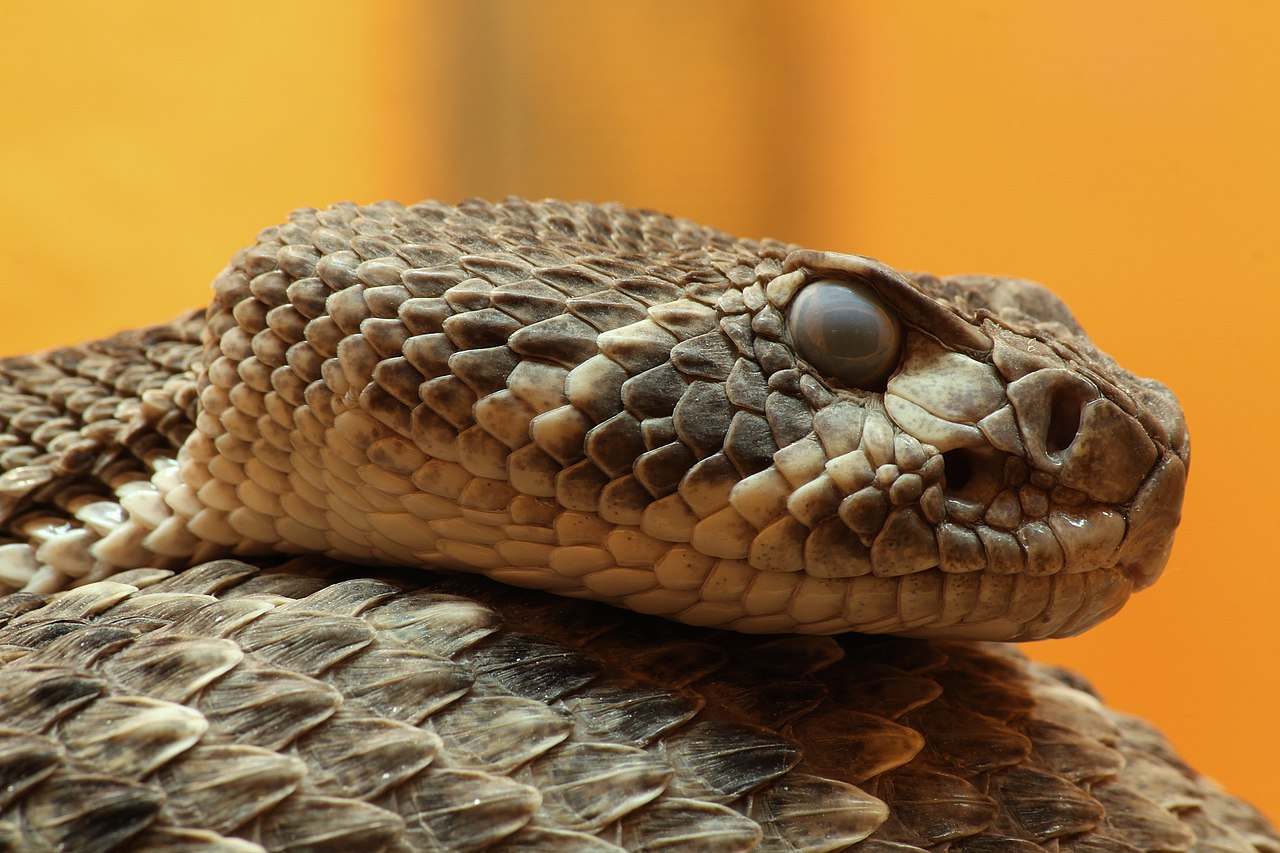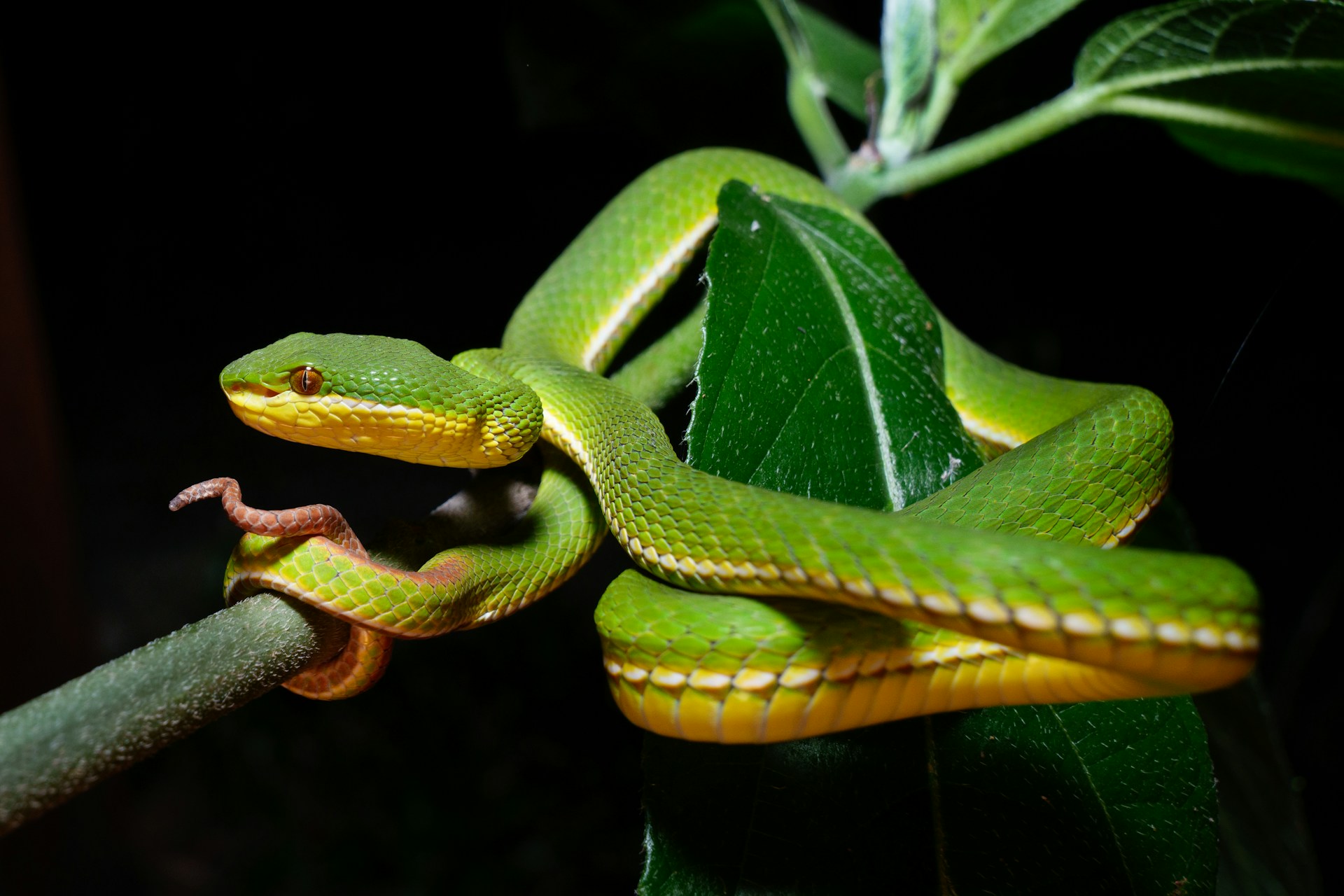In the shadowy depths of forests, beneath desert sands, and within the dense undergrowth of remote jungles live some of nature’s most secretive assassins. Venomous snakes exist on every continent except Antarctica, yet some species are so reclusive that encounters with humans are extraordinarily rare. These elusive serpents have evolved remarkable adaptations that keep them hidden from human eyes, sometimes going decades without scientific documentation. While their infamous cousins like cobras and rattlesnakes regularly make headlines, these mysterious venomous snakes operate in obscurity, their lives largely unknown to science. Their rarity doesn’t diminish their importance to ecosystems or the potency of their venom—in fact, their elusiveness adds another layer of complexity to understanding and protecting these fascinating creatures.
The Phantom of Mountain Streams: Wagner’s Viper
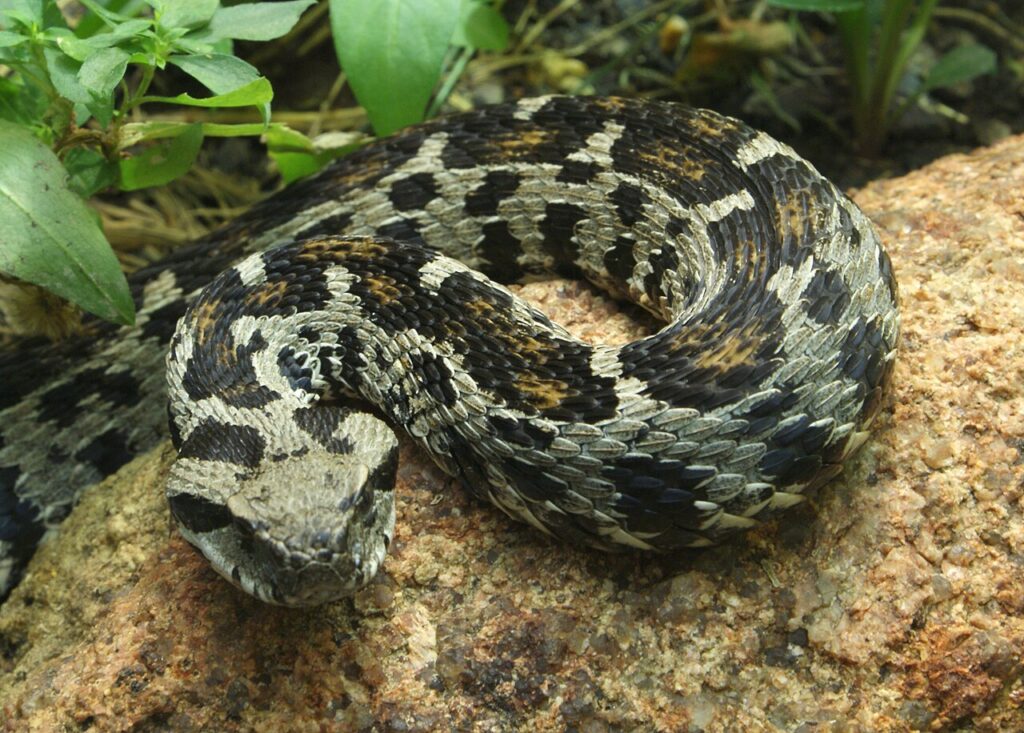
Wagner’s Viper (Montivipera wagneri) haunts the remote mountain regions of eastern Turkey and Armenia, making it one of the world’s least encountered venomous snakes. This critically endangered viper exists in such small populations and in such inaccessible terrain that even dedicated herpetologists might spend their entire careers without seeing one in the wild. With distinctive geometric patterns in contrasting colors of gray, brown, and red, Wagner’s Viper possesses a remarkably beautiful appearance that few human eyes have witnessed. Their extremely limited range, specific habitat requirements, and the political instability of their native region have combined to make them virtually invisible to scientific study, with significant gaps in our understanding of their behavior and ecology.
The Secretive Stiletto Snake: Death in Disguise
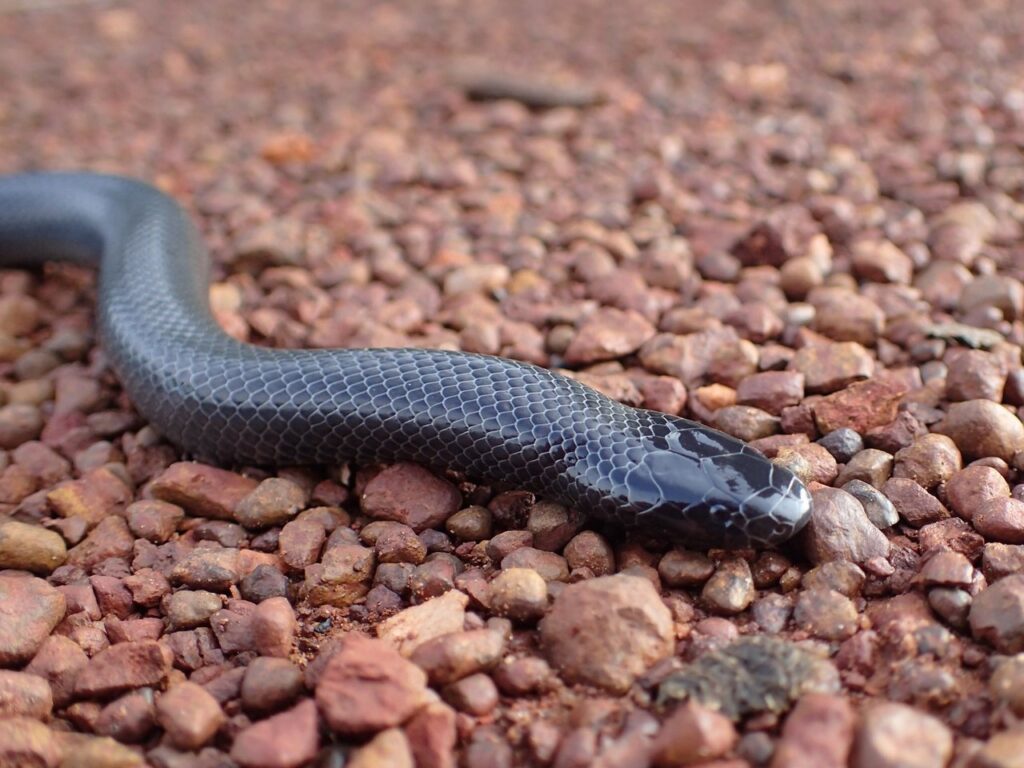
The stiletto snake (genus Atractaspis) represents a remarkable example of evolutionary specialization that keeps it virtually invisible to human observation. Unlike most venomous snakes that strike with fangs facing forward, these African and Middle Eastern burrowers can deliver venom through enlarged fangs that protrude from the sides of their mouths—even when closed. This adaptation allows them to inject venom sideways while remaining almost completely buried in soil, making them nearly impossible to spot in their natural habitat. Their plain brown or black coloration, small size, and almost exclusively subterranean lifestyle ensure that even locals living in stiletto snake territory might go their entire lives without encountering one. The genus contains multiple species, many of which are so rarely observed that significant aspects of their natural history remain complete mysteries to science.
Jameson’s Mamba: The Forgotten Relative
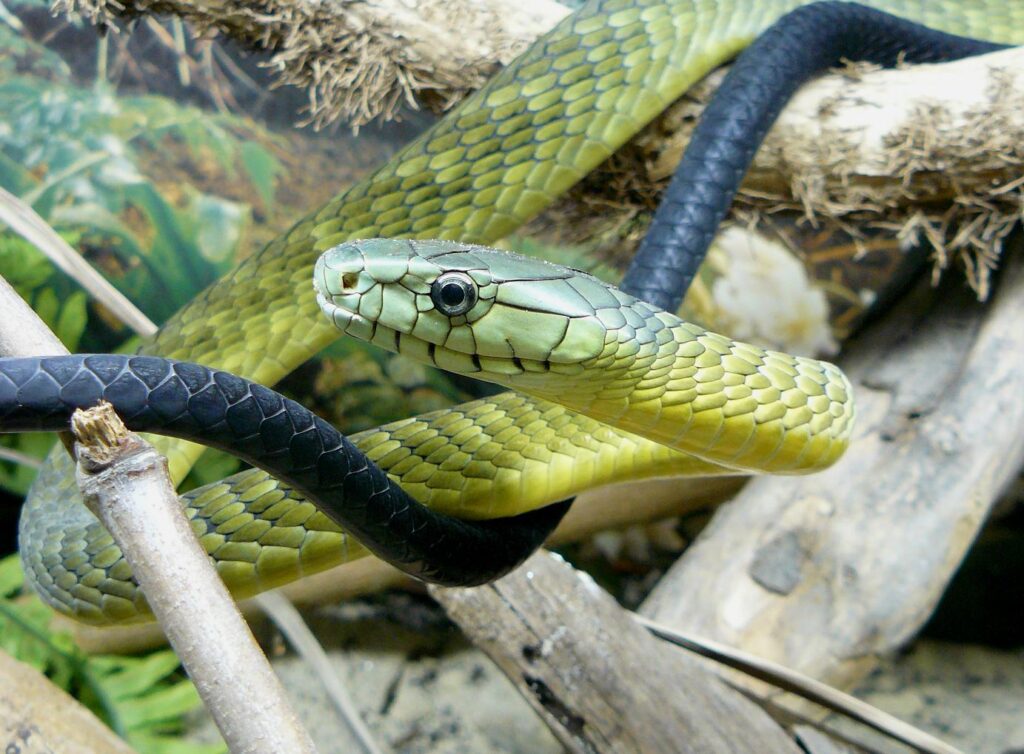
While its cousins, the black mamba and green mamba, are infamous throughout Africa, Jameson’s Mamba (Dendroaspis jamesoni) remains largely unknown despite possessing equally potent venom. Dwelling in the dense rainforests of Central and West Africa, this arboreal hunter spends most of its life high in the canopy, rarely descending to ground level where human encounters might occur. The snake’s green coloration provides perfect camouflage among the leaves, and its preference for undisturbed forest habitat keeps it far from human settlements. Unlike its more aggressive relatives, Jameson’s Mamba typically retreats quietly when threatened, further reducing chances of human observation. Even among professional herpetologists working in its range, firsthand encounters with wild Jameson’s Mambas remain exceptionally rare and noteworthy events.
The Phantom Snake of Australia: The Small-scaled Snake
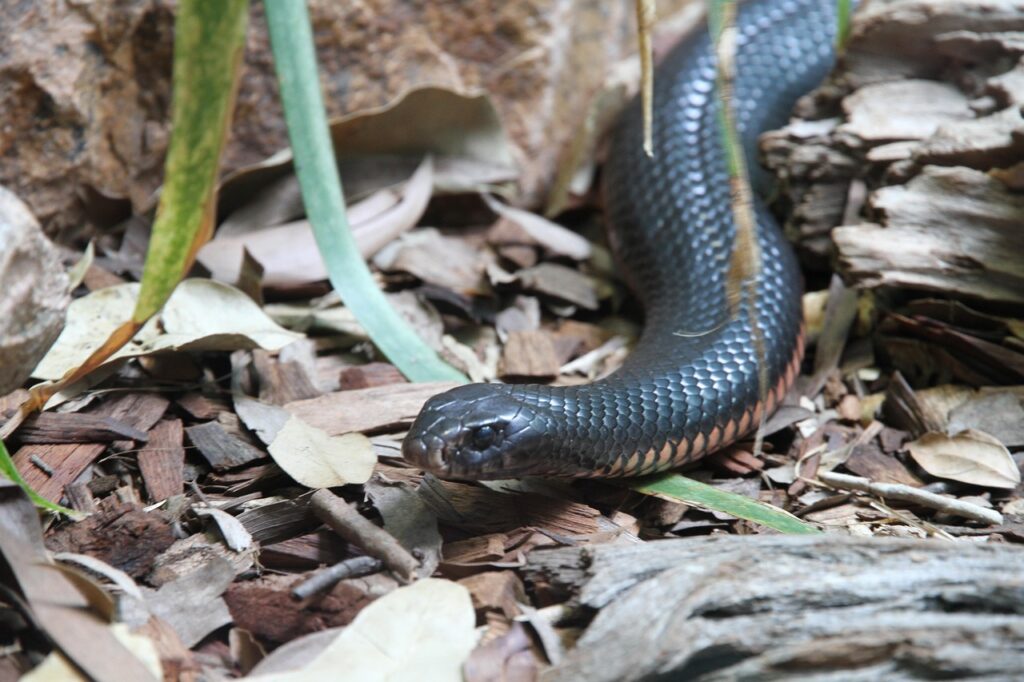
Australia’s small-scaled snake (Oxyuranus microlepidotus), also known as the Inland Taipan, has earned the dubious title of the world’s most venomous snake based on its venom’s toxicity, yet remains among the least frequently encountered. Inhabiting remote, arid regions of central eastern Australia, this snake actively avoids human contact by remaining within cracked soils and abandoned animal burrows. Its limited range in sparsely populated areas means that even Australian snake experts might never encounter one outside captivity. What makes the small-scaled snake particularly elusive is its tendency to remain completely motionless when detecting potential threats, coupled with coloration that perfectly matches its dusty habitat. Despite containing enough venom in a single bite to kill approximately 100 humans, documented bites from wild specimens are virtually nonexistent due to the snake’s extreme shyness and remote habitat.
The Ghost Viper of Southeast Asia: Wagler’s Pit Viper
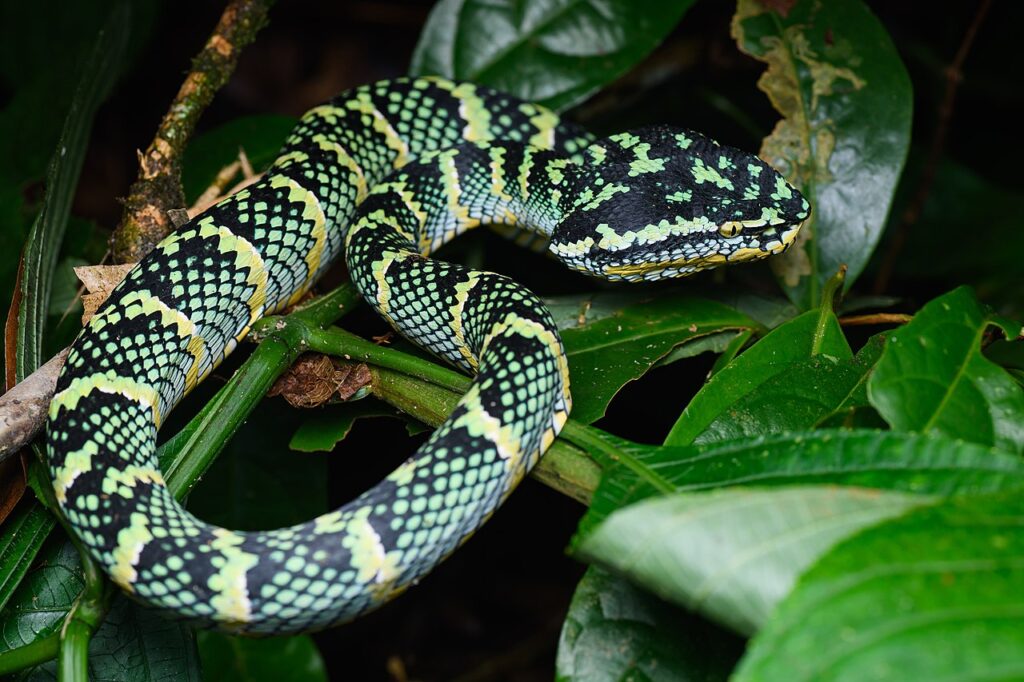
Wagler’s Pit Viper (Tropidolaemus wagleri) represents one of nature’s most remarkable examples of camouflage, making it virtually invisible within its tropical forest habitat. These arboreal vipers from Southeast Asia possess the uncanny ability to change color over time—from bright green to rusty red or mottled patterns—allowing them to disappear completely among vegetation. Their habit of remaining perfectly motionless for days while waiting for prey makes them nearly impossible to detect even for trained observers searching specifically for them. Unlike many venomous snakes that flee when approached, Wagler’s Pit Vipers rely entirely on their camouflage for protection, which paradoxically makes them both extremely difficult to find and potentially dangerous when accidentally disturbed. Their preference for the highest levels of the rainforest canopy further removes them from human observation, as these layers remain largely inaccessible and unexplored.
The Desert Phantom: The Arabian Sand Viper
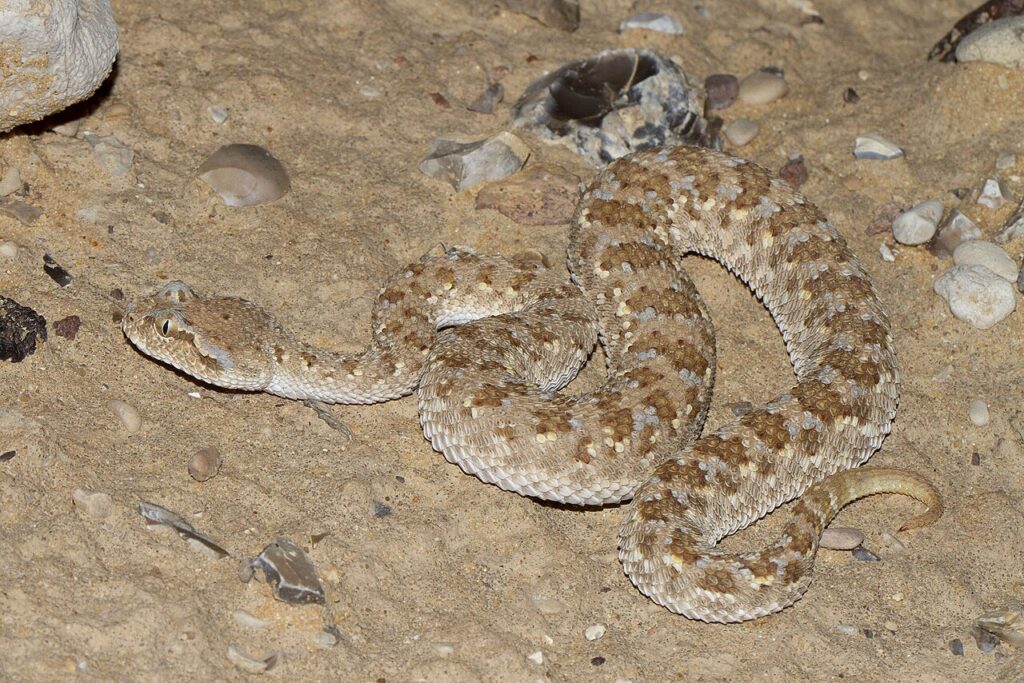
The Arabian Sand Viper (Cerastes gasperettii) has perfected the art of disappearance within the harsh desert landscapes of the Arabian Peninsula. This master of concealment uses a unique sidewinding locomotion to move across loose sand without leaving typical snake tracks, making it nearly impossible to track. When not moving, these vipers submerge themselves completely beneath the sand with only their eyes and nostrils exposed, a behavior known as “sand swimming.” Their distinctive horned scales above each eye, while visually striking, actually enhance their camouflage by breaking up the snake’s outline when partially buried. Despite inhabiting regions increasingly developed for oil extraction, encounters remain exceedingly rare, with most petroleum workers in their range never spotting one despite years in the field.
The Himalayan Mountain Enigma: King Cobra Subspecies
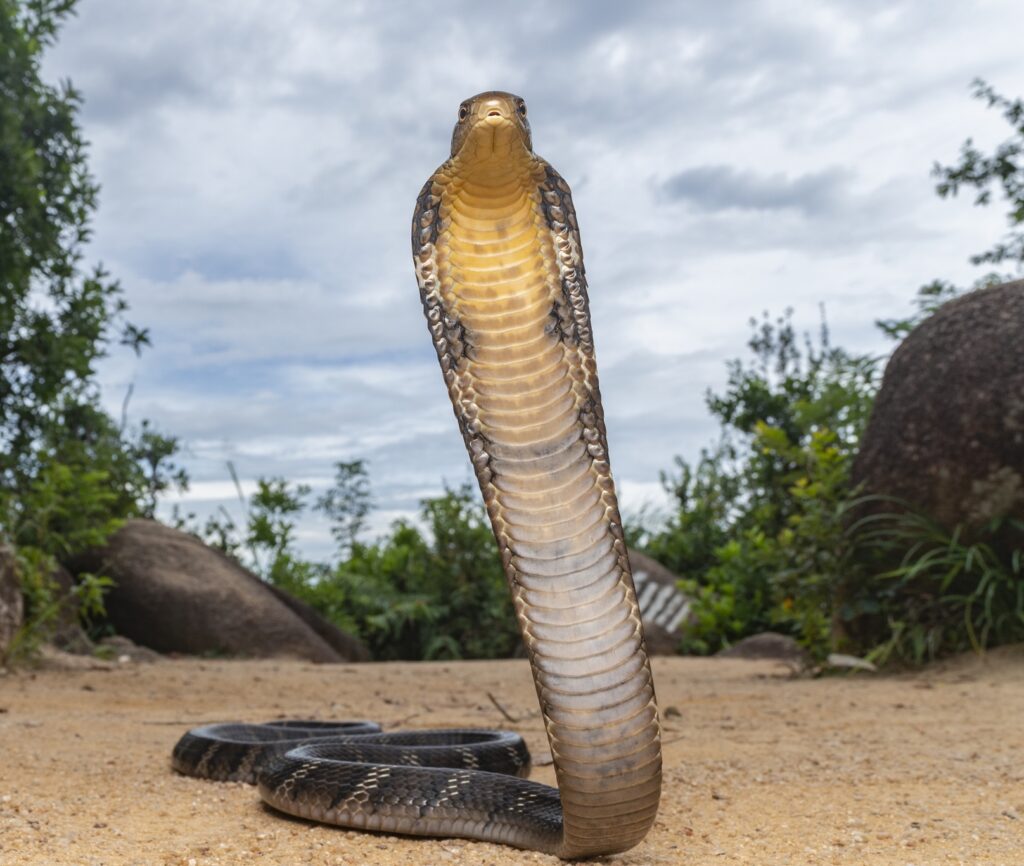
While the standard King Cobra (Ophiophagus hannah) is relatively well-known, its high-elevation subspecies that inhabit remote regions of the Himalayas remain among the least studied venomous snakes on Earth. These mountain-dwelling king cobras have adapted to cooler climates at elevations where few researchers venture, making scientific observation extraordinarily rare. Unlike their lowland relatives, these montane kings display more secretive behavior, deeper coloration, and possibly different venom compositions adapted to their unique prey base. Their territory in politically sensitive border regions between India, Nepal, and China further complicates research efforts, with bureaucratic hurdles often preventing comprehensive studies. Some herpetologists speculate these isolated populations may eventually be classified as distinct species as more data becomes available, though gathering such information remains exceptionally challenging due to their elusiveness.
South America’s Ghost: The Bush Viper
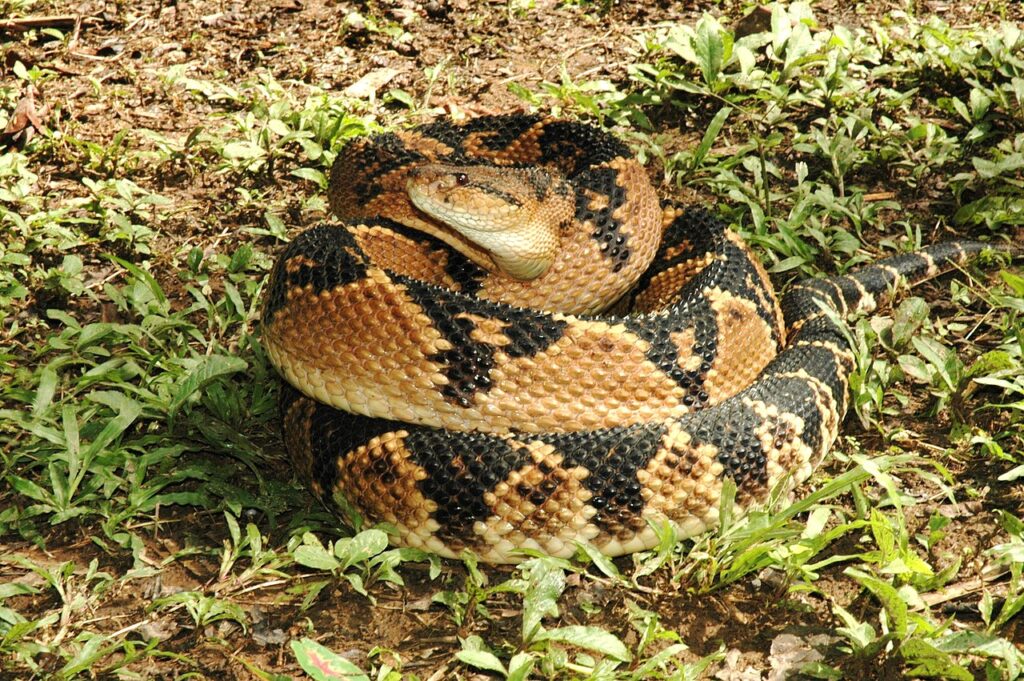
The South American Bush Viper (Lachesis muta), also known as the Bushmaster, holds the distinction of being the largest venomous snake in the Americas yet remains among the most elusive. Despite reaching lengths of up to 12 feet, these massive pit vipers manage to disappear completely within the leaf litter of pristine rainforests. Their cryptic coloration—featuring complex geometric patterns of browns, tans, and blacks—renders them virtually invisible among fallen leaves and forest debris. Bushmasters are notorious for their extremely secretive nature, with some populations going entirely undocumented for decades despite intensive searching by researchers. Their preference for undisturbed primary rainforest means that habitat destruction has likely eliminated many populations before they could even be studied, making each observation increasingly precious to science.
The Hidden Cobra of India: Sinomicrurus macclellandi
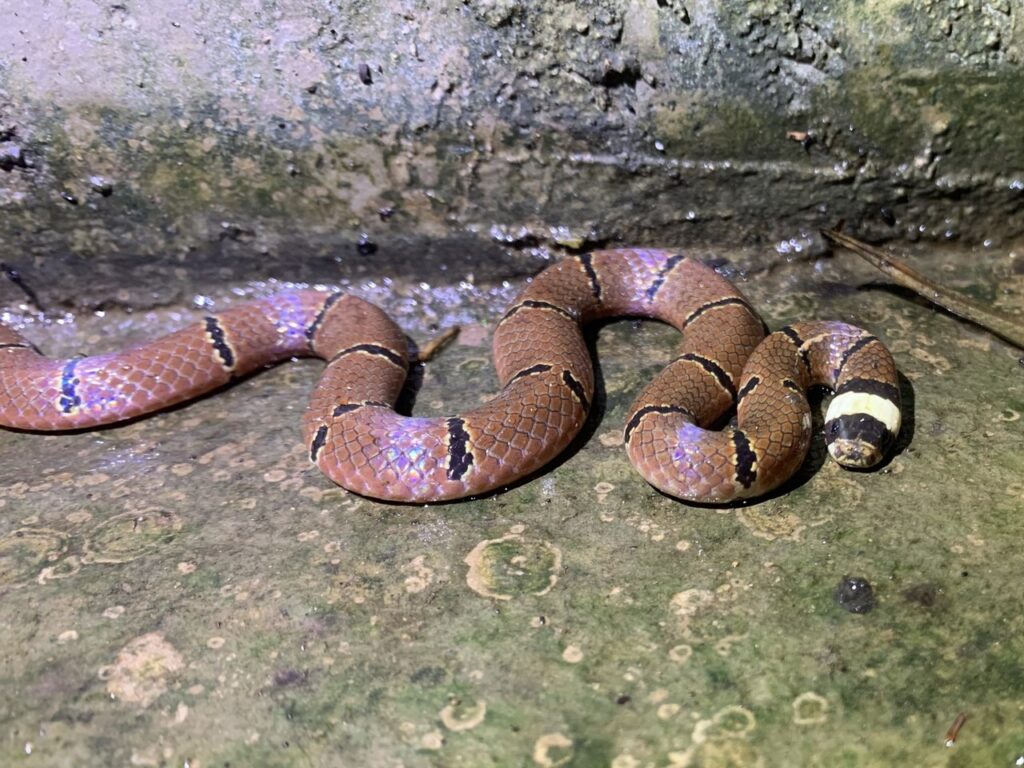
The Macclelland’s Coral Snake (Sinomicrurus macclellandi) inhabits some of India’s most densely populated regions yet manages to remain virtually unseen by the millions of humans living alongside it. This diminutive elapid, related to cobras and kraits, spends nearly its entire life underground, emerging only during specific seasonal conditions that occur briefly each year. Despite possessing powerful neurotoxic venom comparable to many larger cobras, documented bites are almost non-existent due to their secretive nature and non-aggressive temperament. Their specialized diet of other small, fossorial snakes keeps them confined to specific microhabitats that humans rarely disturb. Indian snake rescuers report that, despite thousands of snake calls annually in regions where Macclelland’s Coral Snakes are known to exist, encounters with this species remain extraordinarily rare events worth documentation.
The Forest Ghost: Bothriechis aurifer
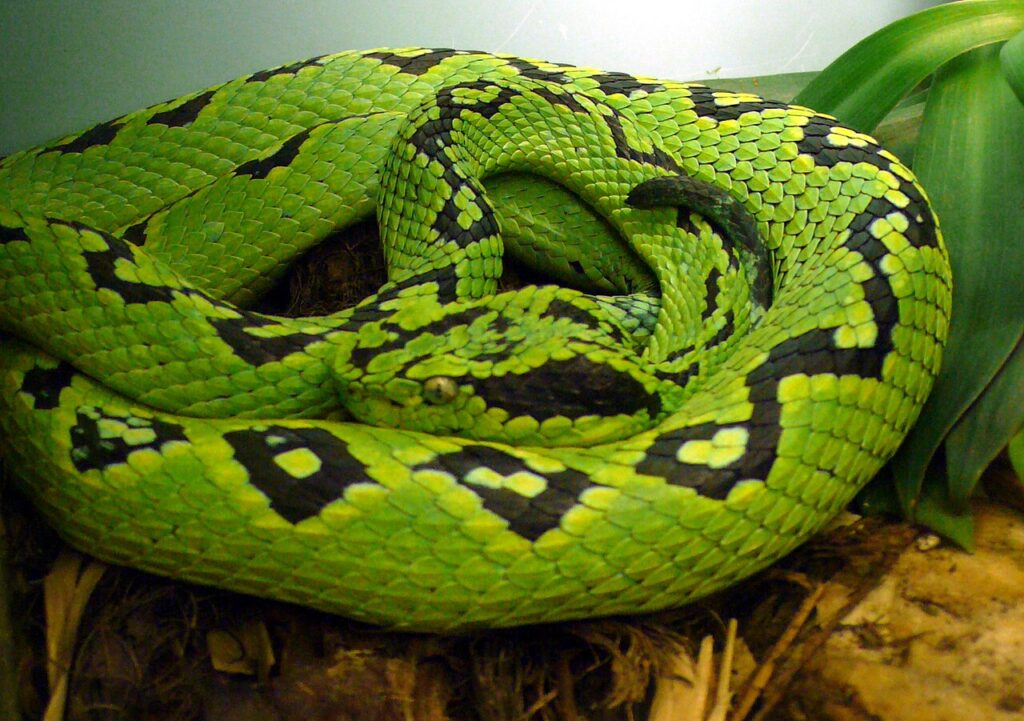
The yellow-blotched palm-pitviper (Bothriechis aurifer) inhabits the cloud forests of Guatemala and southern Mexico, regions increasingly threatened by deforestation yet remarkably understudied. These arboreal vipers possess striking yellow and green patterning that, counterintuitively, renders them nearly invisible among the mossy branches and epiphyte-laden trees of their mountain habitats. Their preference for the highest strata of pristine cloud forest canopies places them in ecosystems that humans rarely access, with much of their range consisting of near-vertical terrain that challenges even the most determined researchers. Bothriechis aurifer demonstrates extremely sedentary behavior, sometimes remaining motionless on the same branch for weeks, further reducing chances of detection. With fewer than a dozen specimens ever thoroughly studied in scientific literature, these snakes represent one of Central America’s greatest herpetological mysteries.
Africa’s Subterranean Assassin: Atractaspis irregularis
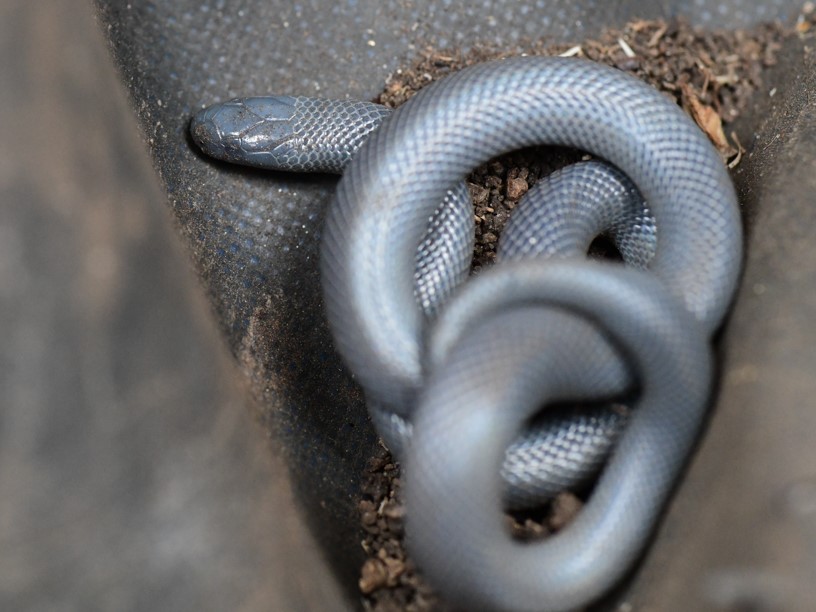
The Burrowing Asp (Atractaspis irregularis) represents the epitome of subterranean elusiveness, spending virtually its entire life beneath the soil surface throughout its range in central Africa. These specialized snakes have evolved cylindrical bodies and reinforced skulls for tunneling, rarely emerging onto the surface except during heavy rains or flooding events. Their unique side-stabbing fang mechanism allows them to envenomate prey within the confined spaces of underground burrows, a specialization that also makes them particularly dangerous on the rare occasions they are accidentally uncovered by humans. Despite inhabiting regions with substantial human populations, so complete is their underground lifestyle that many local communities have no knowledge of their existence despite generations of living above them. Scientific knowledge of their basic biology remains fragmented, with captive specimens often refusing food and rarely displaying natural behaviors.
The Lost Viper of Indonesia: Trimeresurus fasciatus
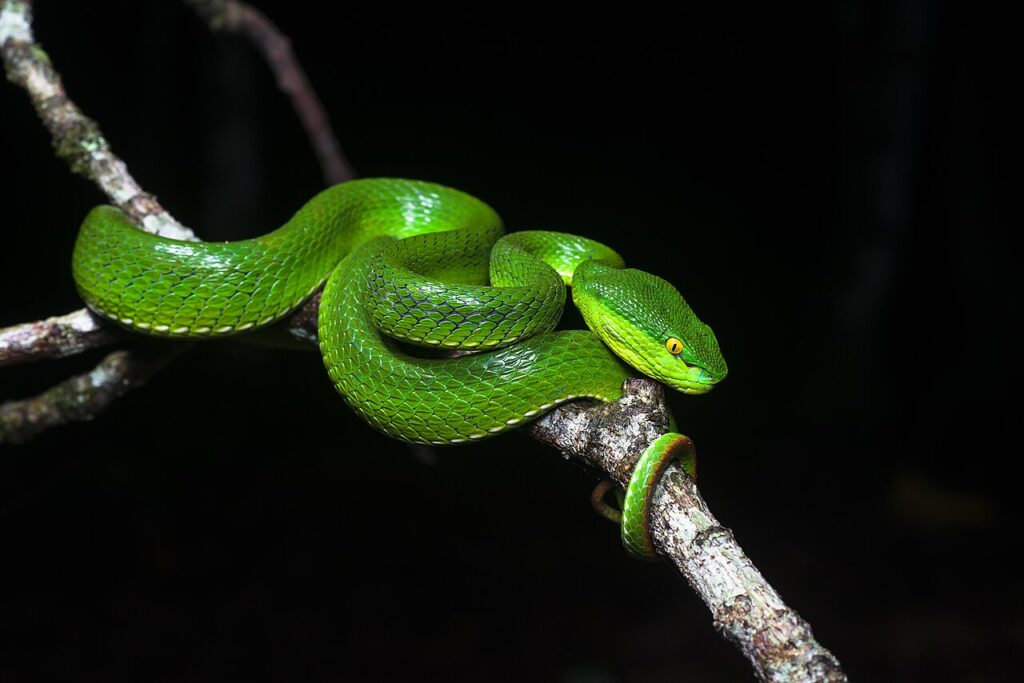
The Banded Pit Viper (Trimeresurus fasciatus) inhabits only a few isolated islands in Indonesia’s remote eastern archipelago, making it one of Asia’s least encountered venomous snakes. This arboreal specialist lives exclusively in undisturbed primary rainforest canopies on islands that see minimal scientific exploration or tourism. Their distinctive banded pattern of vibrant green and black actually functions as disruptive coloration among the dappled light of dense foliage, making them practically invisible despite their bright colors. Local indigenous communities on these islands occasionally report cultural knowledge of these snakes, but even among these forest-dwelling peoples, firsthand encounters remain exceedingly rare. Climate change and increasing deforestation threaten to eliminate populations of these vipers before comprehensive studies can document their basic natural history, creating an urgent conservation challenge.
Why Elusiveness Matters: The Conservation Challenge
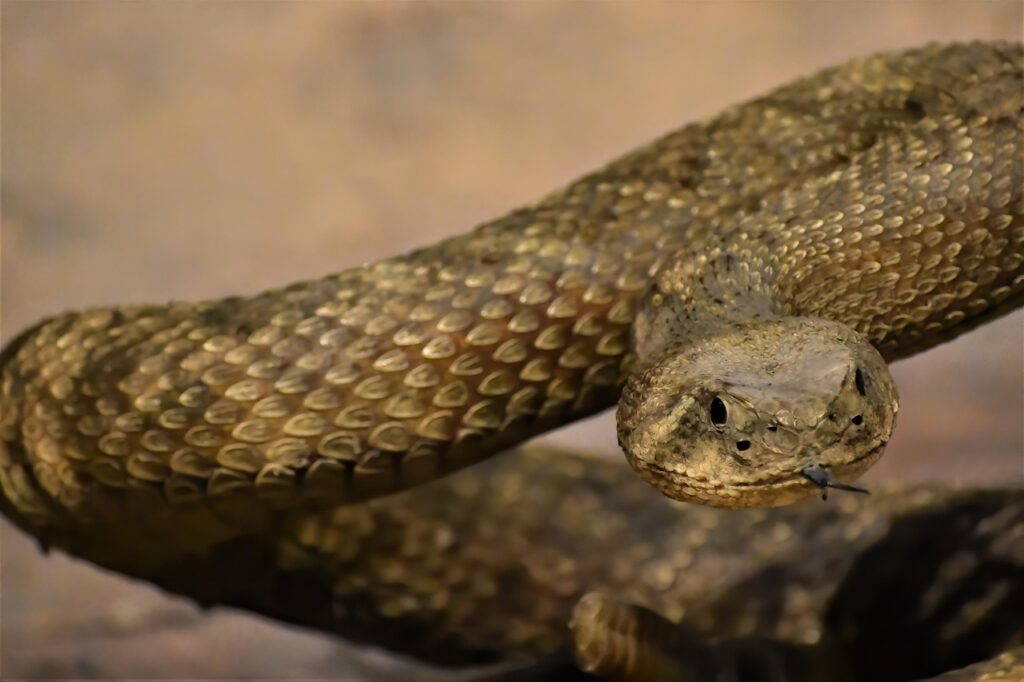
The extreme rarity of human encounters with these elusive venomous snakes creates a significant conservation paradox that challenges traditional protection efforts. Because these species are so rarely seen, even catastrophic population declines might go completely unnoticed until local extinction has already occurred. Their elusiveness also complicates basic research needs, such as establishing population baselines, understanding habitat requirements, and documenting reproductive behaviors essential for captive breeding programs. Many of these rarely-seen species likely possess unique venom compounds with potential medical applications that remain entirely unstudied due to the difficulty in obtaining research specimens. Conservation funding typically prioritizes charismatic or frequently encountered species, leaving these phantom serpents to slip through protection gaps despite their critical ecological roles as specialized predators in some of Earth’s most threatened ecosystems.
Conclusion

The world’s most elusive venomous snakes represent not just zoological curiosities but embodiments of nature’s capacity for specialization and adaptation. Their extreme rarity of sighting should not be misinterpreted as uncommonness—many may exist in relatively healthy populations that simply excel at avoiding human detection. As technology advances, new methodologies like environmental DNA sampling, specialized thermal imaging, and acoustic monitoring may finally pierce the veil of mystery surrounding these secretive serpents. Until then, they remind us that despite centuries of scientific exploration, Earth still harbors remarkable creatures that exist primarily as whispers and legends, their lives unfolding in parallel to our own yet largely untouched by human observation. Their continued elusiveness serves as both a testament to their evolutionary success and a humbling reminder of how much remains undiscovered in the natural world.

